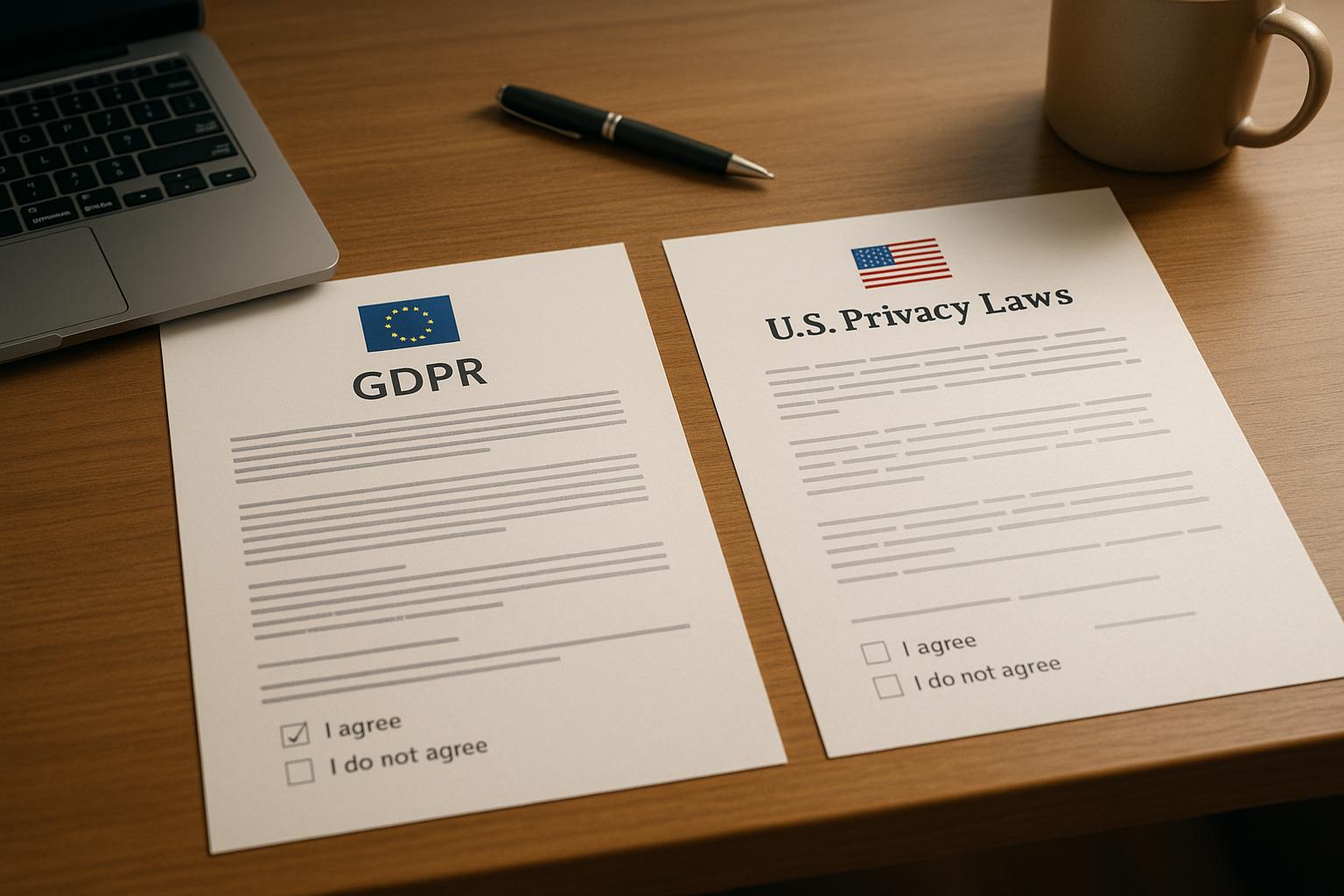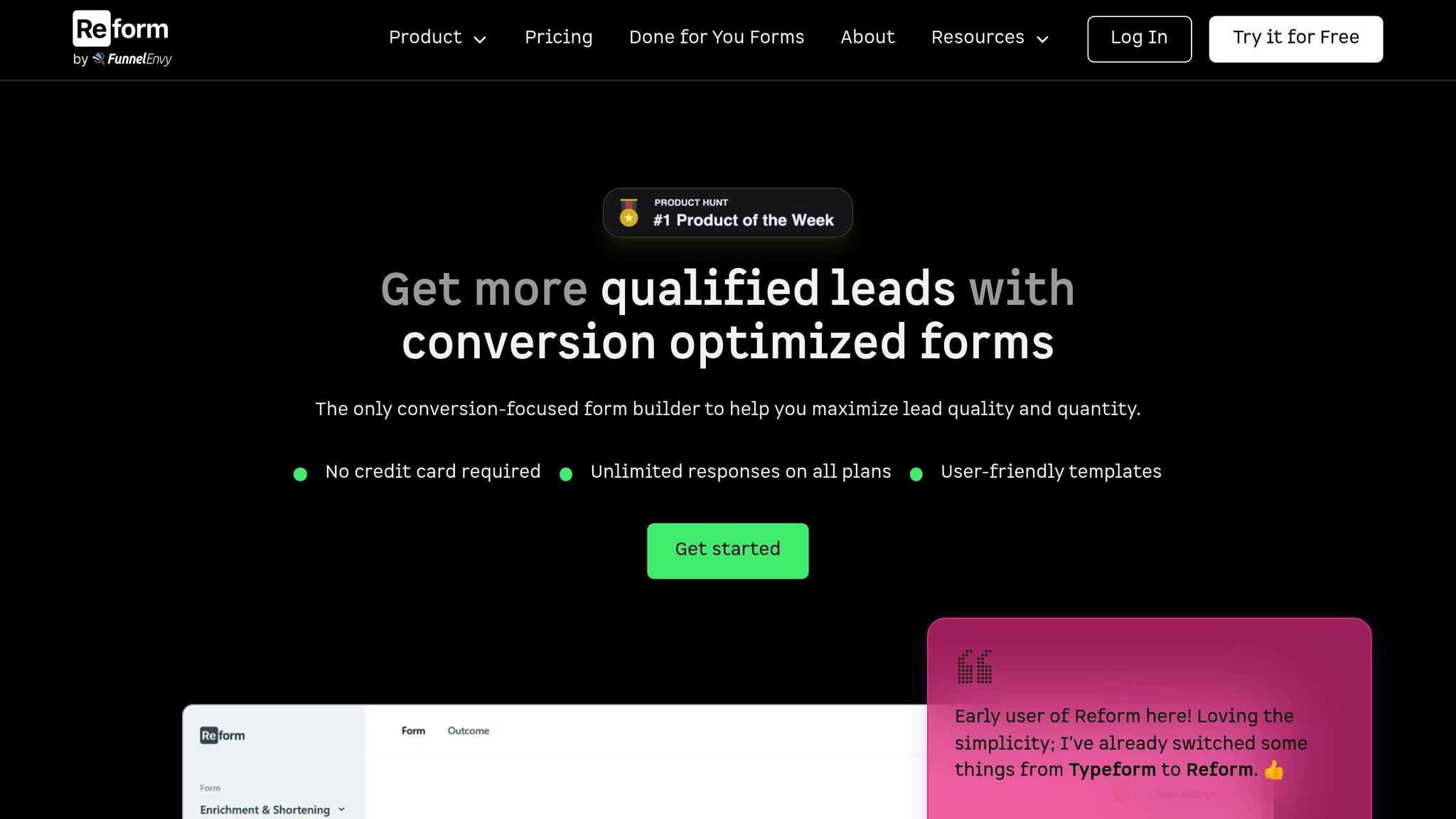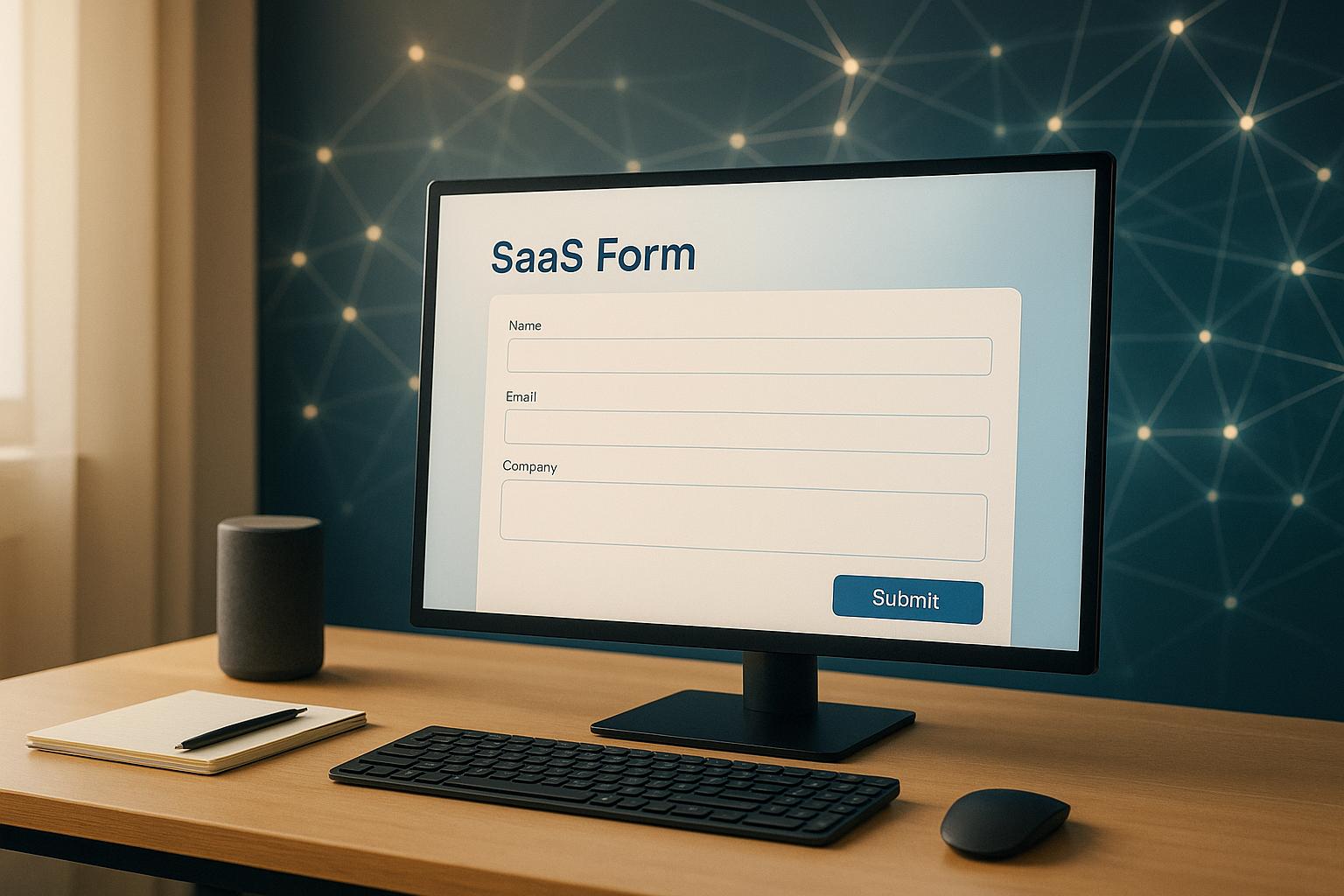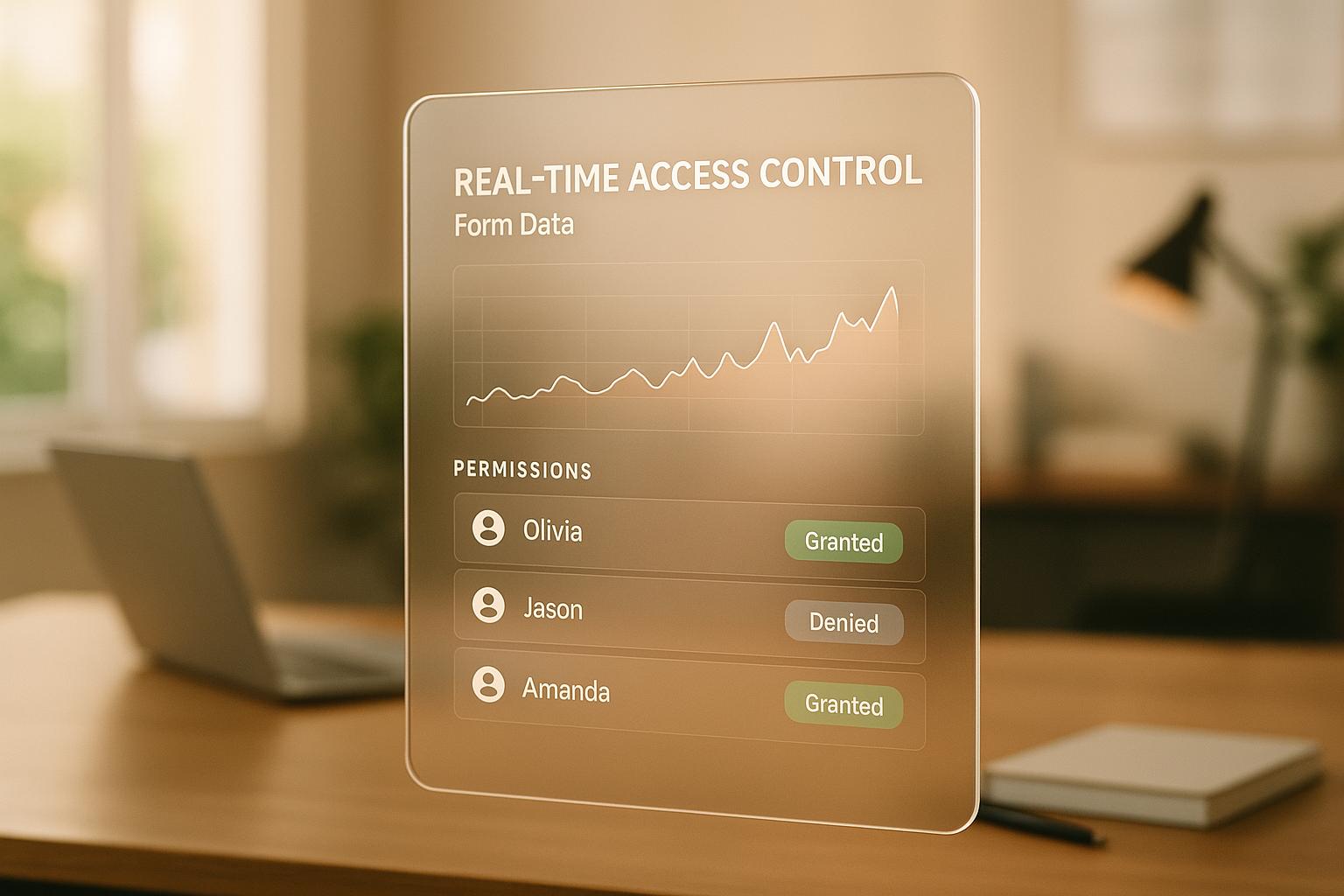How GDPR and U.S. Privacy Laws Handle Consent

Managing user consent for data collection is a legal requirement and a trust-building opportunity. The GDPR and U.S. privacy laws take different approaches to consent, impacting how businesses collect and use personal data:
- GDPR: Requires explicit, opt-in consent that is freely given, specific, informed, and unambiguous. Users must actively agree to data collection, and businesses must provide transparency and easy options to withdraw consent.
- U.S. Privacy Laws: Typically follow an opt-out model, where data collection is allowed unless users actively opt out. Regulations vary by state, with laws like California's CCPA requiring clear disclosures and opt-out options for data sales.
For businesses, complying with these laws means designing clear, user-friendly consent mechanisms. Whether through GDPR's strict opt-in rules or U.S. laws' focus on transparency, the goal is to respect user choices while avoiding fines and maintaining trust.
TECH TALK: Understanding GDPR vs. CCPA: How It Affects Your Business | Part 1 of 3
GDPR Consent Requirements
The GDPR sets a high bar for consent rules, shaping how businesses handle personal data from EU residents. Following these rules isn't just about compliance - it’s also about building trust and improving the quality of user engagement.
GDPR Consent Principles
The GDPR defines consent through four key principles:
Freely given consent ensures users have a genuine choice without pressure or consequences. For example, businesses cannot make access to services conditional on agreeing to non-essential data collection. Users should feel free to say "no" without facing penalties.
Specific consent requires businesses to clearly explain each data processing purpose and obtain separate permissions for each. For instance, if a company wants to use data for both newsletter subscriptions and product recommendations, these must be presented as distinct options.
Informed consent means users must fully understand what they’re agreeing to. This includes knowing who is collecting the data, how it will be used, why it’s needed, and their right to withdraw consent. Ambiguity or confusing language invalidates consent. As the GDPR explains:
"If the request for consent is vague, sweeping or difficult to understand, then it will be invalid. In particular, language likely to confuse - for example, the use of double negatives or inconsistent language - will invalidate consent."
Unambiguous consent requires a clear affirmative action from users. The GDPR explicitly states that "silence, pre-ticked boxes or inactivity should not therefore constitute consent". Users must actively confirm their agreement, such as by ticking an empty checkbox or clicking an "I agree" button.
Transparency and User Control
Consent requests must be presented transparently. The GDPR mandates that they be "clearly distinguishable from the other matters", ensuring they don’t get buried in lengthy terms or technical jargon.
To give users meaningful control, businesses should break down broad requests into specific categories. This allows users to decide precisely which data processing activities they agree to. Additionally, withdrawing consent should be as straightforward as giving it.
For example, Epic Games provides separate unchecked boxes for terms and optional marketing, allowing users to clearly manage their data preferences. This kind of transparency is essential for designing forms that collect accurate and compliant consent.
Technical Requirements in GDPR
Organizations must keep detailed records of consent, including when it was given, what permissions were granted, and how it was obtained.
The GDPR’s "data protection by design and by default" principle requires integrating privacy measures from the outset. This includes using techniques like encryption, pseudonymization, or anonymization to safeguard personal data.
Managing cookie consent is another challenge, but tools like CookieYes simplify the process with customizable banners. These banners explain cookie categories (e.g., necessary, analytics, marketing) and let users accept or reject each type.
For lead generation forms, implementing a double opt-in process provides documented proof of consent and ensures users genuinely want to engage. Systems must also make it easy for users to withdraw consent, such as through unsubscribe links or preference settings.
Noncompliance can lead to fines of up to 4% of annual global revenue or €20 million, whichever is higher. This highlights the need for robust technical systems.
A practical example is Jaquar Group’s Data Subject Consent Form, which secures explicit consent for various purposes like third-party data sharing, marketing, and image processing. The form also provides clear instructions for withdrawing consent.
These technical measures form the backbone of a compliance strategy that not only meets GDPR standards but also strengthens lead generation efforts.
U.S. Privacy Laws and Consent
Privacy laws in the United States take a different route compared to GDPR. Instead of requiring explicit consent upfront, U.S. regulations often allow data collection first, with the option for users to opt out later.
Opt-Out vs. Opt-In Consent Models
In the U.S., the opt-out consent model is the standard. This means businesses can collect and use personal data unless users actively withdraw their consent. In this setup, data collection is the default, and it’s up to users to take action if they want to stop it. For instance, an online retailer in California can gather customer data for targeted ads without asking for explicit permission first. However, they must clearly display a "Do Not Sell or Share My Personal Information" link, giving consumers the option to opt out.
This contrasts with opt-in models, which require users to give explicit permission before their data is collected. While opt-in models prioritize user control and transparency, opt-out models allow for broader data collection, which can lead to privacy concerns and affect user trust.
Email marketing illustrates this difference well. Under the CAN-SPAM Act, businesses don’t need prior consent to send marketing emails. However, they must include an easy-to-find unsubscribe link, allowing recipients to opt out of future emails.
These consent models emphasize the importance of clear communication and disclosure in U.S. privacy laws.
Notice and Disclosure Requirements
U.S. privacy laws focus heavily on transparency through detailed privacy notices. While upfront consent isn’t always required, businesses are obligated to inform users about what data they collect, how it’s used, and who it’s shared with.
These notices go beyond basic disclosures. Businesses must provide clear, easy-to-understand privacy policies that outline their data practices and explain user rights. For example, the California Privacy Rights Act (CPRA) requires companies to detail their data collection, usage, and sharing practices. Privacy notices must also inform users about their rights, such as opting out of data sales or requesting access to or deletion of their data.
Some state laws, like those in California, even require businesses to respect universal opt-out signals, such as the Global Privacy Control (GPC), which allows users to set their privacy preferences directly through their browser settings.
State-by-State Differences
The U.S. privacy landscape becomes even more complex with state-level variations in consent and enforcement. While most states follow the opt-out model, specific requirements differ significantly.
California stands out with its comprehensive privacy laws under the CCPA and CPRA. These laws require opt-in consent for processing sensitive personal data, such as racial or ethnic origin, biometric data, precise geolocation, and social security numbers. For children under 16, businesses must obtain opt-in consent before selling personal data, and for children under 13, parental consent is required. California’s definition of consent is particularly rigorous:
"Consent under CPRA must be a freely given, informed, specific, and unambiguous indication of a person's agreement to process their personal data".
Additionally, California prohibits the use of dark patterns - designs that manipulate users into making choices they wouldn’t otherwise make.
Other states, such as Virginia and Colorado, have adopted similar rules for sensitive data while maintaining general opt-out practices for other types of information.
Enforcement varies by state. California’s CPRA is enforced by the CPPA and the Attorney General, with fines reaching $7,500 per violation. In Virginia, the Attorney General can take violators to court. Many states also offer companies a "right to cure", giving them a chance to address violations before facing penalties. However, this grace period isn’t available in all states.
The complexity of navigating these varying state laws has led many businesses to adopt automated compliance systems. Between 2022 and 2023, about 19% of companies automated their CCPA compliance efforts, highlighting the growing need for streamlined solutions to manage multi-state privacy requirements.
sbb-itb-5f36581
GDPR vs. U.S. Privacy Laws: Key Differences
The GDPR and U.S. privacy laws take fundamentally different approaches to protecting personal data. While both frameworks aim to safeguard user information, their methods for achieving this differ significantly, particularly in areas like consent models, data handling, and enforcement.
GDPR vs. U.S. Privacy Laws Comparison
These differences influence how businesses manage user data and comply with regulations:
| Aspect | GDPR | U.S. Privacy Laws |
|---|---|---|
| Consent Model | Requires opt-in for most data processing | Generally uses an opt-out model for data collection |
| Sensitive Data | Always requires explicit consent | Varies by state: some require opt-in (e.g., Virginia, Colorado), others use opt-out (e.g., California, Utah) |
| Cookie Banners | Mandatory under the ePrivacy Directive | Typically not required |
| Data Sales | Requires explicit consent | Operates on an opt-out basis |
| Geographic Scope | Applies to any organization targeting EU residents | State-specific laws with varying thresholds for applicability |
| Maximum Fines | Up to €20 million or 4% of global annual revenue | $2,500 to $20,000 per violation depending on the state |
| Legal Basis | Requires a lawful basis for all processing | No such requirement |
This table highlights the practical challenges businesses face when navigating these regulatory frameworks. U.S. privacy laws often allow data collection by default, provided companies disclose their practices and offer an opt-out option. In contrast, GDPR’s opt-in model demands explicit user consent before processing most types of personal data.
What This Means for Businesses
These differences have significant implications for how companies operate. Managing compliance across both systems is no small task, especially for global businesses. Each framework demands distinct strategies, particularly when it comes to data collection and user consent.
For example, GDPR’s strict opt-in requirements mean businesses must implement detailed consent mechanisms and provide users with granular control over their data. On the other hand, U.S. laws often allow businesses to rely on opt-out defaults, making compliance less burdensome but requiring transparency in disclosing practices.
The complexity grows for companies operating internationally. GDPR applies to any organization targeting EU residents, regardless of where the business is based. Meanwhile, the U.S. has no federal privacy law, leaving businesses to navigate a patchwork of state-specific regulations. With over a dozen states now enforcing comprehensive privacy laws, companies must adapt to varying requirements across jurisdictions.
The difference in regulatory focus is rooted in historical and cultural contexts. The EU’s approach prioritizes privacy as a fundamental right, reflecting concerns over personal data misuse. In contrast, U.S. laws have traditionally been more accommodating of commercial data practices. As privacy expert Cristina Pop explains:
"GDPR arguably sets the standard for data privacy worldwide. However, the lack of a true privacy-first approach in America's disparate data privacy regulations makes it necessary to update them in line with the fundamental rights people now expect around how their data is used, shared, or disclosed".
To meet these challenges, businesses must invest in both legal expertise and technical solutions. U.S.-based companies expanding into Europe need robust systems to comply with GDPR’s stringent requirements. This includes geo-targeting tools, consent management platforms, and legal counsel to navigate the nuances of EU regulations. The stakes are high - GDPR fines can reach up to 4% of global annual revenue, far exceeding the penalties imposed under most U.S. state laws.
The regulatory landscape is also evolving quickly. Since the introduction of the CCPA, eleven additional states have enacted comprehensive privacy laws. This growing patchwork underscores the need for tailored compliance strategies, as discussed throughout this guide. Businesses must stay agile, adapting to new laws while balancing the demands of dual compliance frameworks.
How to Build Compliant Forms
Creating forms that meet both GDPR and U.S. privacy law standards requires understanding the distinct approaches these regulations take toward consent. GDPR emphasizes explicit opt-in consent, while U.S. laws often rely on opt-out mechanisms. This difference directly impacts how you design forms and present choices to users. Below are practical steps to balance regulatory requirements with effective form design.
GDPR Compliance Tips
For GDPR, the focus is on obtaining clear, specific consent. Use straightforward, jargon-free language so users can easily understand what they’re agreeing to. As stated in the regulation, "The request for consent needs to be in clear and plain language, intelligible and easily accessible."
- Active consent is mandatory: Avoid pre-checked boxes. Users must actively opt in. For example, Epic Games' account registration process includes an unchecked box for consent, paired with direct links to the terms of service and privacy policy.
- Granular consent options: Allow users to choose consent for each data processing activity. Spotify’s multi-step signup form does this well, offering separate options for marketing communications and data sharing, with clear links to relevant terms.
- Make withdrawal simple: Ensure users can revoke consent as easily as they give it. Jaquar Group's Data Subject Consent Form provides several ways - like email links, account settings, or dedicated forms - for users to withdraw consent.
- Document everything: Keep detailed records of consent, including timestamps, IP addresses, and the exact language of the form users saw when they agreed.
U.S. Privacy Law Compliance Tips
U.S. privacy laws prioritize transparency about data collection and use. For example, Boston Dynamics’ contact sales form demonstrates this by clearly stating how collected data will be used.
- Prominent opt-out options: While data collection may be the default, users must have easy access to opt out of specific uses, like data sales or targeted advertising.
- Adapt to state-specific rules: Some states, like Virginia and Colorado, require opt-in for sensitive data, while others, such as California and Utah, rely on opt-out mechanisms. Tailor your forms based on the location of your users.
- Integrate your privacy policy: Include a link to your privacy policy within the form. CookieLawInfo’s newsletter signup form, for instance, informs users about receiving privacy updates and provides a direct link to the policy, fostering transparency.
Using Reform for Consent Management

A tool like Reform can simplify compliance across regions by offering customizable options for consent management.
- Customizable consent fields: Separate checkboxes for different purposes give users granular control. Conditional logic can adjust consent options based on user location.
- Multi-step forms and analytics: Break down consent into manageable steps and use real-time analytics to monitor consent rates and identify potential compliance gaps. These insights can help refine your forms and demonstrate compliance during audits.
- Data security and integration: Reform includes built-in encryption to protect sensitive information, meeting both GDPR and U.S. standards. It also integrates with systems like CRMs and email marketing tools, ensuring consent preferences sync automatically.
- Record-keeping features: Reform timestamps submissions and saves the exact form version users saw when providing consent. This documentation is crucial for audits or when users exercise their data rights.
"Many companies collect more personal data than needed, increasing their exposure to risk and complicating compliance. Under GDPR, businesses must collect only data justified by a clear purpose".
Conclusion: Compliance and User Experience
Navigating the consent requirements of GDPR and U.S. privacy laws leads to noticeably different user experiences. Visitors from the EU often encounter detailed cookie banners requiring immediate action, while users in the U.S. are more likely to see simpler notices with the option to opt out later. The unified approach of the EU contrasts sharply with the fragmented state-by-state landscape in the U.S., adding layers of complexity for businesses operating across regions. This highlights the importance of a compliance strategy that not only meets legal standards but also prioritizes ease of use - a concept explored in our guide on building compliant forms.
These differences reflect deeper attitudes toward privacy. In the EU, data protection is considered a fundamental right, whereas in the U.S., policies have traditionally leaned toward supporting business flexibility in data collection. For example, 92% of EU citizens express concerns about mobile apps collecting data without consent, emphasizing the strong preference in Europe for explicit permission.
Striking the right balance between regulatory requirements and user experience is essential. Transparency in consent practices isn't just about legal compliance - it’s a key factor in building trust. In fact, 87% of consumers say data privacy plays a major role in deciding which companies they trust. This means that clear, user-friendly consent practices can serve as both a legal safeguard and a competitive edge.
Tools like Reform make this balancing act easier by combining compliance with usability. With features like customizable consent fields, location-based conditional logic, and built-in documentation, Reform helps businesses adapt to the varying demands of GDPR and U.S. regulations. Its multi-step forms and real-time analytics enable companies to track consent rates effectively, while automated record-keeping and seamless CRM integration ensure that user preferences are consistently applied across marketing platforms.
Ultimately, effective consent management is about giving users control and maintaining transparency. Whether you're navigating GDPR's stringent rules or the diverse privacy laws in the U.S., the goal remains the same: empower users with clear choices about their data while fostering the trust needed for lasting business relationships.
FAQs
How can businesses decide on the right consent model when operating in both the EU and the U.S.?
Businesses must tailor their consent practices to meet the legal standards of each region where they operate. In the European Union, the General Data Protection Regulation (GDPR) mandates that consent be explicit, freely given, and informed. This is typically achieved through opt-in models, where users actively agree to data collection. In contrast, the United States has a patchwork of consent rules that vary by state and industry. Many of these allow for implied consent or opt-out models, which are generally less strict than GDPR requirements.
To remain compliant, companies should thoroughly assess the regulations relevant to their operations. For instance, businesses operating in the EU must adhere to GDPR, while those in the U.S. may need to comply with state-level laws like the California Consumer Privacy Act (CCPA). Adopting adaptable consent mechanisms that address the demands of both frameworks can help businesses stay compliant and foster trust with users across different regions.
What challenges do companies face when meeting GDPR's opt-in consent requirements?
Companies face several challenges when it comes to meeting GDPR's opt-in consent requirements. A key hurdle is creating clear, specific, and user-friendly consent requests. Explaining how user data will be used in a way that's both transparent and easy to grasp isn't always straightforward.
Another significant issue is securing active and explicit consent from users. GDPR rules out pre-checked boxes or any form of implied consent, meaning businesses must take extra steps to ensure users intentionally opt in. On top of that, companies need to securely store and document these consents, ready to provide proof of compliance during audits.
For global organizations, the situation becomes even trickier. Balancing GDPR requirements with other privacy laws, like those in the U.S., adds layers of legal complexity.
Using tools designed to simplify form creation and data management can help businesses navigate these challenges more efficiently while also strengthening user trust.
How can businesses navigate compliance with different state privacy laws in the U.S.?
To navigate the ever-expanding maze of U.S. state privacy laws, businesses need to first determine which regulations apply to them. This often depends on factors like where their customers are located and how they handle data. From there, it’s crucial to keep privacy policies up to date, ensuring they reflect the latest legal requirements.
Using automated tools can make compliance less overwhelming. These tools can track legal updates, manage consent preferences, and maintain detailed compliance records. On top of that, creating a workplace that prioritizes privacy - through employee training and clear internal guidelines - can help minimize risks and strengthen accountability.
Related posts
Get new content delivered straight to your inbox

The Response
Updates on the Reform platform, insights on optimizing conversion rates, and tips to craft forms that convert.
Drive real results with form optimizations
Tested across hundreds of experiments, our strategies deliver a 215% lift in qualified leads for B2B and SaaS companies.





